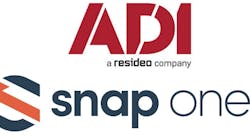Some Can Be Controversial
Q: Active methods of training involve students in their own instruction. Can you describe the several types of active methods instructors can choose from when presenting material?
A: Activity allows students to demonstrate and apply knowledge from the course material and to focus on problem areas. Socrates pioneered the use of questioning to get students to move along their course material on their own. In a training course, instructors can work through steps with students utilizing the Socratic Method.
In a class, an instructor might open with, “Where do we start in installing this controller?” Student answers are then used to guide everybody in the class through the steps involved in creating the installation process. When students hit a wall, the instructor then uses the same questioning techniques to work them through the problem by referencing previous material or hinting at the answer.
Brainstorming is an activity the instructor can use to get students thinking about a topic. In this model, a topic is outlined that has a series of possible subtopics. Students then work through exploring all possible outcomes. Brainstorming is a fairly non-threatening exercise since no answer is out of bounds.
The Q&A session is a useful technique for sifting through students’ questions. It helps move the class along.
Experiential training methods such as role playing, simulation and games are somewhat controversial in training circles as invasive. Student comfort levels can inhibit them from effectively reaching the goals of the exercise. That is not to say that there is no role for this training.
There are no steadfast rules for organizing the use of different methods. Choices should follow a simple set of guidelines and should be rationalized during the planning stage. Review the goals and pitfalls of each method and create new ones that borrow from the old. The key things to consider when choosing a method are:
- Choose the best vehicle for the material. Technical content requires more lecture, while sales content may require more experiential training.
- Vary the methods appropriately. Some methods follow very easily. For example, Q&A sessions after lectures are common and useful. Remember that you can implement a quick brainstorming session in the middle of the lecture. Try to be true not only to the content, but also to the attention and comfort of the class.
- Do not overuse methods. Don’t try to use so many different activities to keep students involved that they lose the flow of the material in the process. Plan each exercise carefully and to its full potential.
- Put yourself in the place of the students. If you would have a significant problem with a particular method and can’t justify the instructional benefit, then you should not make that choice. Remember, the goal is always for the students to learn from the training.
- Interactivity: The 10-Minute Rule. Within the first 10 minutes of your session you should have completed the introduction and overview and have your participants involved. If instructing a hardware course, have the students break down the equipment within 10 minutes of starting the course.
Connie Moorhead is the President of The CMOOR Group and founder of SecurityCEU.com, Louisville, KY. CMOOR is a full-service education solution provider, custom online content development and Webinar service firm focusing exclusively on the security, manufacturing, and construction industries. SecurityCEU is an industry certification resource and online continuing education provider. Send your training questions and needs to [email protected].

